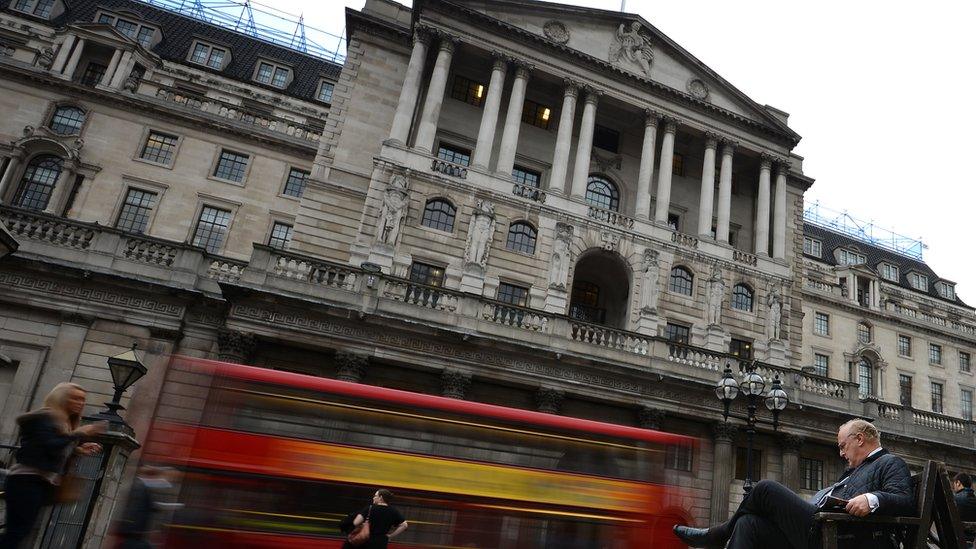Brexit economic pain delayed, not cancelled
- Published
- comments

No interest rate cut, economic growth much better than expected and inflation forecast to be substantially higher than previously thought.
The Bank has significantly revised its position on the direction of travel for the British economy since its last gloomy assessment in August.
Forecasts, eh?
Well, when considering forecasts, it is always worth remembering John Maynard Keynes' maxim - when the facts change, so sir, do I.
Since August, two substantive facts have changed.
First, sterling has seen another precipitate fall - which the Bank says can be linked to fears of a "hard" Brexit affecting the UK's open trade relationship with the European Union and consequent business investment uncertainty.
The fall in the value of the pound has led to greater inflation risk as import prices rise.
Today's forecast of inflation hitting 2.75% by the end of 2017 - and staying there - is the highest forecast for inflation the Bank has ever made.
Cheap
The Bank does not suggest, quite, that real incomes could start falling, but as inflation creeps up towards the level of the growth in wages, a squeeze on living standards is the result.
The second fact that has changed is to do with the consumer.
Confidence and spending has bounced back more strongly than expected, a point the Bank says could well be associated with its decision to cut interest rates three months ago.
Borrowing is remarkably cheap, the amount of unsecured credit being taken on by households is at levels approaching those last seen before the financial crisis and spending, particularly in the services sector, is robust.
The economy, in the near term, is looking good.
Balance
These two changes - inflation risk increasing, consumer confidence high - have led to a significant change in approach to interest rate policy.
Whereas in August, the Monetary Policy Committee suggested that the next move on rates would be down, it now says that interest rate policy could move "in either direction".

The Bank is involved in a delicate balancing act.
On the one hand it wants to support the economy by keeping interest rates low.
On the other, its remit demands that it hits the 2% inflation target set by the government.
Increasing interest rates is one way to tackle rising inflation - as it takes spending power out of the economy.
Today the Bank made it clear that though it would tolerate inflation "above target" for a period, its patience wasn't endless.
That suggests that the next interest rate move could be up.
Risk
But, it does not mean it will be any time soon.
Why?
Because although inflation is an approaching risk, the economy is still facing difficult times ahead, according to the Bank.
Yes, it has upgraded its growth forecasts markedly for this year and next.
But it has downgraded growth for 2018 as business investment and trading relationship uncertainty start to feed through to economic output.
That downgrade is so substantial that at the end of 2018, the Bank believes the economy will be on aggregate more than 2.5% smaller than expected before the Brexit referendum vote.
That's a bigger relative decrease in output than the Bank predicted earlier this year.
Uncertainty?
This is economic pain delayed, not cancelled.
Of course, forecasts are just that - forecasts. Today's is the Bank's best estimate about the direction of travel for the economy.
But, as Mr Keynes said, facts on the ground can and do change.
Just consider the possible impact of today's court defeat for the government - on the need for a Parliamentary vote on triggering Article 50 - on the timetable for leaving the European Union.
If that timetable is significantly delayed and uncertainty continues for longer, then the Bank's forecasts will have to be revised all over again.